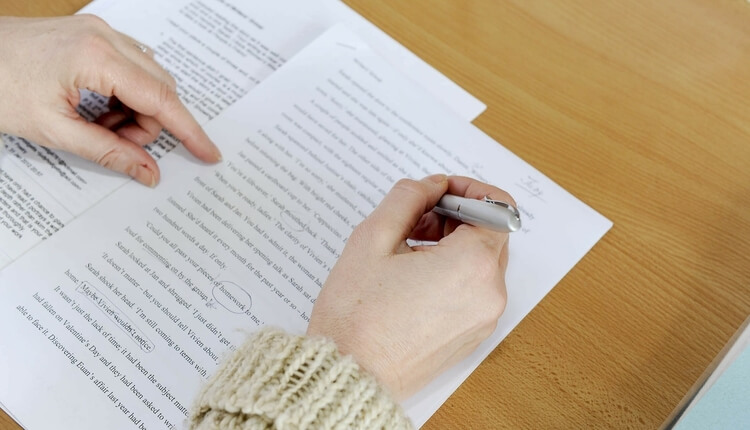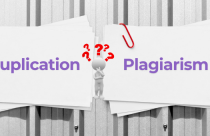How to Effectively Paraphrase in a Research Paper

When writing a research paper, a researcher will often need to refer to a previous publication and summarize the findings in a paraphrase. Why? Because quoting the entire passage of interest will take up too much space and may contain much information that is not relevant. Also, the original passage might be written in a style or language not readily understood by the intended readers. Here are some guidelines for paraphrasing correctly.
Avoiding Plagiarism
Instead of rewriting an entire passage of a paper, it may be possible to cut and paste selected parts, stringing them together in a way that presents the gist of the passage and still sounds natural. But this is not paraphrasing. This is plagiarism. If you copy from another work, you must cite the author and then place the copied parts in quotation marks. This generally proves to be a clumsy and intrusive method in a research paper, which is why paraphrasing is so useful. One can avoid committing the misconduct of plagiarism by using plagiarism checker tools.
What is Paraphrasing in Research Writing
Paraphrasing in research writing involves restating someone else’s ideas or information in your own words without changing the meaning. It is a crucial skill in academic writing because it allows you to incorporate evidence and ideas from sources while integrating them seamlessly into your own work.
Paraphrasing can be different from summarizing as the paraphrased text can be of similar, shorter, or longer length than the original, depending on how you rephrase the content. Furthermore, it retains more detail from the original text, aiming to rephrase the content while preserving its depth. Although paraphrasing incorporates ideas from external sources like quotation, they are different in several ways:
Paraphrasing |
Quotation |
|
Definition |
Paraphrasing involves rephrasing someone else’s ideas or information in your own words while maintaining the original meaning | Quotation involves directly using the exact words from a source and enclosing them in quotation marks |
Originality |
The words are entirely your own, but the ideas are borrowed from the source | Both the words and ideas are directly taken from the source |
Word Choice |
You express the same ideas using your own language and style | You reproduce the exact words used by the original author |
Length |
It can be of similar, shorter, or longer length than the original text, depending on how you rephrase the content | It typically maintains the original length of the quoted passage |
Use of Quotation Marks |
No quotation marks are used because you are not directly quoting the text | Quotation marks are used to indicate the exact words of the source |
Integration |
Allows for smoother integration of source material into your own writing | Requires careful integration to ensure the quoted text fits seamlessly into your writing |
Citation |
Even though the words are your own, you must provide a citation to credit the original source | A citation is required to indicate the source of the quoted text |
How to Paraphrase To Avoid Plagiarism
In a paraphrased passage, you should still start out by referring to the original author, then summarize the relevant passage of the author’s work in your own words and in your own style.
Example of paraphrasing, “In his 1989 paper, Robinson concluded that . . .“ There should be nothing in the paraphrased passage that was obviously lifted from the original.
Related: Preparing your manuscript for submission? Check out this post to avoid journal rejection!
When to Paraphrase
Paraphrasing is recommended when you aim to retain the crux of a reference, while changing the wording. It is particularly useful for changing the organization of ideas, simplifying complex material, and clarifying technical passages. However, it is essential to cite the original sources, to acknowledge the origin of the idea or the concept.
Give Credit where Due
Although the original authors should be given credit for the gist of the paraphrased passage, don’t give them more credit that they deserve. If a previous work supports your own there is a temptation to oversell the earlier work, as in the authors “proved” this or that. But scientific experiments cannot prove anything; they can only support a hypothesis or disprove alternatives. Better to use a more neutral statement such as “Robinson’s 1989 paper strongly supports the proposed mechanism, since it reports that . . .”
The exact format of the citation will depend on the citation style you are using (e.g., APA, MLA, Chicago, etc.). Here’s a general guide on how to cite a paraphrased text:
1. Include the Author’s Name
In most citation styles, you should include the author’s last name and the publication year.
2. Provide the Page Number (if applicable)
If you are paraphrasing from a specific page or section of the source, include the page number. This is more common in APA and MLA citation styles.
3. Indicate that it is a Paraphrase
Mention clearly in your citation that you are presenting a paraphrase, not a direct quote.
Always refer to the specific guidelines of the citation style you are using, as each style has its own rules for formatting in-text citations and bibliographic entries.
Don’t Overuse
When I began freelance writing, I found that the issue of “fair use” was of great concern to authors. In an original work of your own, you are allowed to quote a certain amount from a previously written copyrighted work, but if you quote too much you can get in trouble for copyright infringement. How much is too much? Nobody knows. Only the haziest guidelines exist. The situation is somewhat similar in the use of paraphrases. Paraphrases are supposed to be a small proportion of an original work. If the paraphrased material is a major portion, the new work risks being seen as derivative of the original, a weak paper riding on the back of a stronger one. A good paper stands on its own, and any paraphrased passages should be there only to clarify and support it.











This is very useful for beginners. Thank you.
Absolutely epic post! I have learned a lot from this post and appreciate that you took the time to write it. Keep sharing!